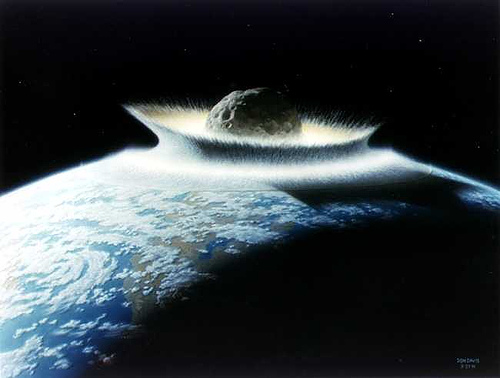25 × 92 = 2592
Science & Math
Math Notes
13 + 53 + 33 = 153
The Beverly Clock
In the foyer of the Department of Physics at New Zealand’s University of Otago is a clock that has been running continuously since 1864. The “Beverly Clock” is driven by variations in atmospheric pressure and by daily temperature variations, so it never needs winding.
Relax

On March 23, 1989, a 1,000-foot asteroid missed the Earth by 400,000 miles.
If it had passed 6 hours earlier it would have struck us, creating the largest explosion in recorded history.
Math Notes
42 = 24
Math Notes
(27/8)9/4 = (9/4)27/8
Tee Time

The last golf shots on the moon were taken by Apollo 14 astronaut Alan Shepard in February 1971.
When the crew returned to Earth, they received the following telegram from the Royal and Ancient Golf Club in Scotland:
Warmest congratulations to all of you on your great achievement and safe return. Please refer to the Rules of Golf section on etiquette, paragraph 6, quote – before leaving a bunker a player should carefully fill up all holes made by him therein, unquote.
Reductio Ad Absurdum
Forget everything you know about reducing fractions — it turns out you can just cancel individual digits:

Not convinced?


This would have made fifth grade so much easier …
(This is a ***JOKE*** -- please don't take it seriously.)
Erdös Numbers

Hungarian mathematician Paul Erdös was immensely prolific — he published about 1,500 articles in his lifetime. His influence is so great that his colleagues have taken to assigning “Erdös numbers” to one another. Erdös himself gets an Erdös number of 0; his direct collaborators get a 1; anyone who collaborates with them gets a 2, and so on.
Those in the first rank include many of the world’s top mathematicians, but there’s one standout: Hank Aaron. The Baseball Hall of Famer once signed a baseball with Erdös while accepting an honorary degree — and that, some say, counts as a joint publication.
Counting the Days
Thomas Fuller, known as the Virginia Calculator, was stolen from his native Africa at the age of fourteen and sold to a planter. When he was about seventy years old, two gentlemen, natives of Pennsylvania, viz., William Hartshorne and Samuel Coates, men of probity and respectable characters, having heard, in travelling through the neighborhood in which the slave lived, of his extraordinary powers in arithmetic, sent for him and had their curiosity sufficiently gratified by the answers which he gave to the following questions: First, upon being asked how many seconds there were in a year and a half, he answered in about two minutes, 47,304,000. Second: On being asked how many seconds a man has lived who is 70 years, 17 days and 12 hours old, he answered in a minute and a half 2,210,500,800. One of the gentlemen who employed himself with his pen in making these calculations told him he was wrong, and the sum was not so great as he had said — upon which the old man hastily replied: stop, master, you forget the leap year. On adding the amount of the seconds of the leap years the amount of the whole in both their sums agreed exactly.
— E.W. Scripture, “Arithmetical Prodigies,” American Journal of Psychology, 1891
